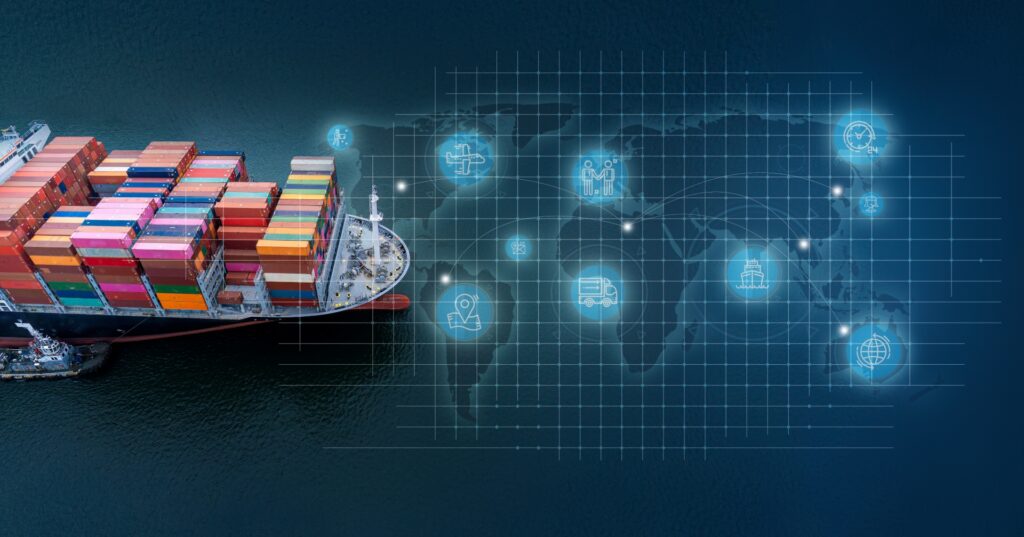In November, ICC Academy will be launching a brand-new online training programme, the Certificate in Digital Trade Strategy (CDTS). Jointly produced with the ICC Digital Standards Initiative, this unique course will give you a complete, end-to-end picture of what is needed to digitise your trade and supply chain processes. The new certificate brings together insights from a well curated panel of more than 20 industry champions, legal experts, innovative trailblazers and public policy officials.
This is the second in a series of posts where we will speak to each of those 20 course authors to get some wider context on the importance of digitising supply chains, learn about some potential obstacles to doing so and get a taste of the content from their lesson within the CDTS.
This interview is with Emmanuelle Ganne, Senior Analyst, Economic Research Department at the World Trade Organization (WTO). Emmanuelle shares her expertise during two modules from the course; Module 1 – the Architecture of International Trade and Supply Chains and Module 5: Interoperability frameworks – putting it together.
Why should an organisation make digitising their trade and supply chains a priority? What are the biggest potential benefits in your opinion and what are the costs, both financially and operationally, of not doing so?
Emmanuelle Ganne (EG): It is important to distinguish between digitalisation at the macro level, i.e. digitalising trade processes through the use of electronic documents, for example, and digitalisation at the micro level, i.e. at the level of the supply chain to enhance efficiency and transparency of a particular supply chain.
Both levels are important, and both bring substantial benefits.
Digitalisation can improve efficiency, which means lower operating costs, fewer delays, and fewer risks of errors, and it can reduce fraud. It can improve transparency along the supply chain, make it easier to identify potential issues with suppliers more quickly, and facilitate Know Your Customer (KYC) processes.
Digitalisation gives companies a competitive edge, but I would go even further. In today’s increasingly digitalised world, going digital is no longer a nice to have, it is a must have.
Organisations that fail to digitalise their trade and supply chains are likely to be left behind as more and more companies go digital. Going digital does require some resources, but it pays off in the medium to long term. The sooner a company makes the move, the more rapidly it will be able to enjoy the benefits.
What do you see as the biggest obstacles to trade and supply chain digitisation? What are some common pitfalls and how can a business successfully navigate these?
EG: At a macro level, a key obstacle is the lack of a legal framework that provides for the recognition of e-signatures and e-documents, the insufficient use of globally accepted standards which leads to inefficiencies in the flow of data between the different actors involved in a trade transaction, and the need to address the digital divide in terms of skills, access, bandwidth, hardware and software.
At the micro level, common issues involve resource constraints, lack of digital skills and lack of knowledge of the various tools available. This is particularly true for small companies. The existing legacy and culture can also weigh heavily on digital transformation efforts.
Why did you want to be part of the new Certificate in Digital Trade Strategy (CDTS)? What impact would you like it to have?
EG: I’m a strong believer in the benefits of trade digitalisation, be it at a macro or micro level. I’ve been spearheading research work on this at the WTO, in close cooperation with the ICC DSI, to raise awareness about the benefits of trade digitalisation and actions needed to advance trade digitalisation.
Educating people involved in cross-border trade transactions is critical. I hope that this certificate will contribute to this effort and will equip relevant stakeholders with the tools they need to go digital.
Moving on now to some more specific questions related to the modules you contributed to in the new certification. What is the difference between a supply chain and a value chain?
EG: A supply chain is the network of all the individuals, entities and activities involved in the manufacturing and sale of a product. It encompasses everything from the sourcing of materials to the manufacturing of the product and its eventual delivery to the end user.
Another term widely used is that of value chains, or global value chains. These two concepts are slightly different. Supply chains aim to meet customer demands while value chains seek to add value to a product along the supply chain, so as to maximize the company’s competitive advantage.
What are some of the common challenges faced by large, complex supply chains?
EG: Supply chains have grown increasingly complex over the years, involving an increasing number of actors spanning various jurisdictions.
Common challenges resulting from large, complex supply chains typically include: inefficiencies due to the large number of documents that have to be filled and passed to various actors of the supply chains – not to mention duplicative procedures; additional delays; increased costs; higher risk of fraud and error; and opacity. Digitalisation is one way to address these inefficiencies and improve transparency.
Finally, what role have regional trade agreements played in advancing digital trade provisions in recent years?
EG: Trade agreements, both regional and even more so multilateral, have a key role to play in supporting trade digitalisation. A supra-national approach limits the risk of regulatory fragmentation.
Since 2010, regional trade agreements (RTAs) have increasingly integrated e-commerce and digital trade provisions. Recent RTAs, such as the United States–Mexico–Canada Agreement and the Regional Comprehensive Economic Partnership (RCEP), include specific provisions on e-commerce and digital trade.
More recently, digital-only agreements have been signed that include binding commitments on issues, such as data and the free flow of digital content, as well as cooperative elements in a wide range of emerging and innovative areas such as artificial intelligence and digital identities. Last but not least, negotiations on e-commerce are also taking place at the WTO on these important issues.
The Certificate in Digital Trade Strategy will be released in early November 2022. To stay up to date with the launch and be notified of early-bird pricing discounts, sign up to our mailing list here.




